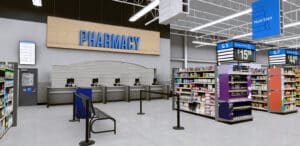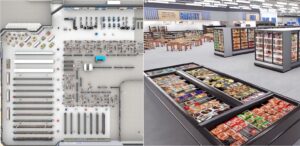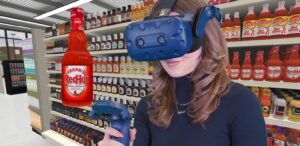8 Important Retail Merchandising KPIs in Category Management
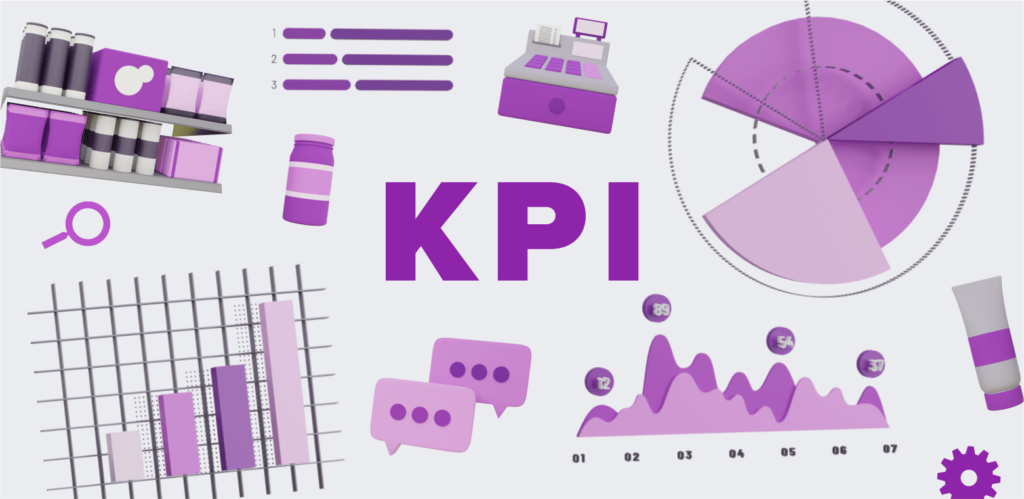
Modern technology and research methods have provided the retail industry with incredible access to consumer data. When correctly analyzed, this information can be used to understand consumers and improve organizational performance.
Today's Category Managers and Consumer Insights Analysts use technology like virtual reality eye tracking and artificial intelligence to gather market research. These advanced research tools are able to generate an incredible amount of big data. Big data offers detailed insights into non-conscious consumer processes such as behaviors, preferences, and bias.
This information can be utilized effectively to better understand shopper purchase decisions, improve products, and enhance store experiences. In order to do so, it is necessary to measure, track, and reflect on key performance indicators (KPIs). The following are examples of important brick and mortar retail KPIs that are collected during market research.
1. Fixations and gaze points
Eye tracking in retail stores is a leading research method used to discover what products draw consumers attention. It allows product manufacturers and retailers to view products from an unbiased consumer perspective. This allows them to optimize packaging appeal, brand recognition, shelf positioning and findability.
The basic eye tracking outputs include fixations and gaze points. These fixation points are visualized through heat maps that interpret distinct levels of visual attention through red, yellow, and green colors. The retail heatmap visual offers a clear picture of what elements draw more in-store attention. They also easily adjust to reflect specific data from different consumer groups for in-depth analysis.
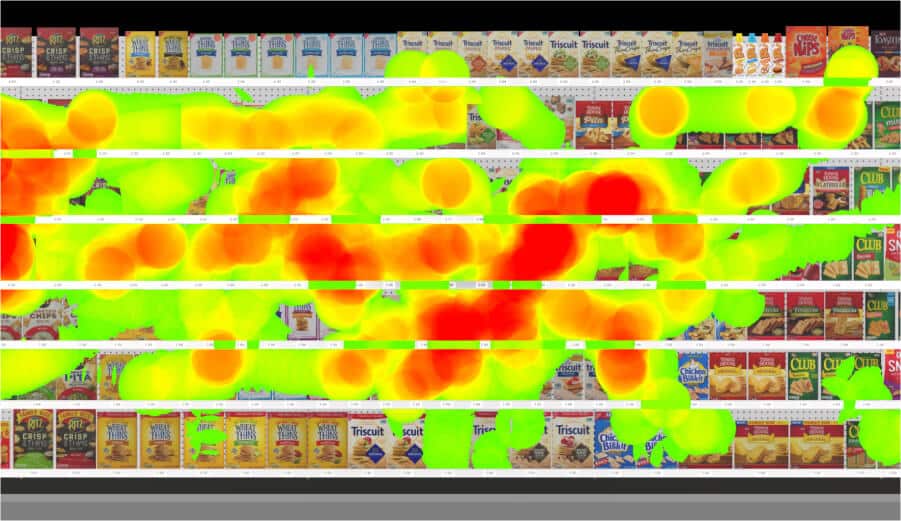
2. Fixation durations
Understanding how long a product or area keeps a consumers attention is another retail merchandising metric generated from eye tracking technology. The two fundamental measurements of this attention span are called average fixation duration and first fixation duration.
The average fixation duration identifies how long a consumer looked at something. It is helpful in determining absorption of marketing messaging or confusion around a product. The first fixation duration conveys how long an individual looked at something for the first time. First fixation duration offers insight into what initially attracts consumer attention.
3. Consumer traffic
Measuring shopper path to purchase behavior and overall retail store foot traffic is essential in making store layout decisions. Using the foot traffic KPI, retailers can improve where categories and products are placed throughout the store to generate more sales.
Consumer traffic information can be displayed using a retail store heat map with straightforward path heatmap visuals. A path heat map provides a top down camera view of consumer routes taken in the store. They allow researchers to analyze popular areas of consumer traffic.
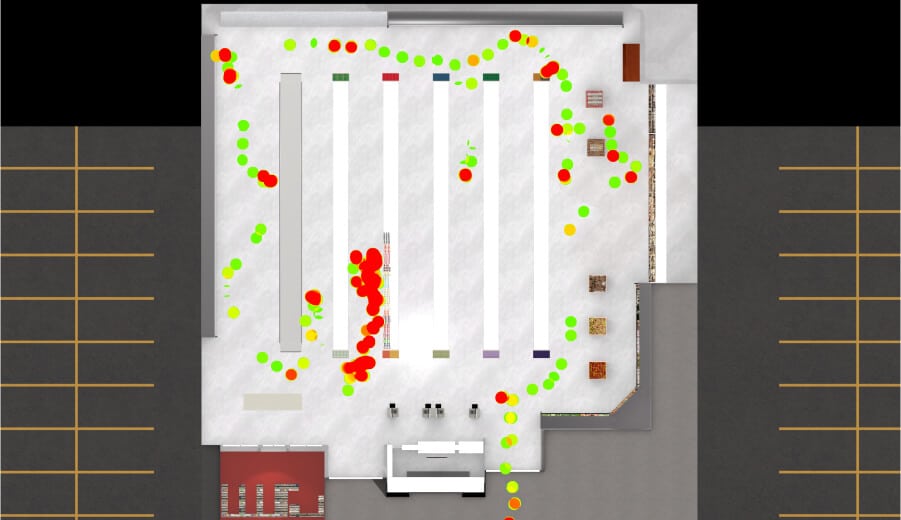
4. Consumer stopping power
Consumer stopping power is calculated using eye-tracking data including percent total users noticed and average fixation duration spent with the ad, product, or area of interest. This metric measures the ability something has to make a potential customer stop, notice, and make a purchase.
The consumer stopping power informs organizations on how well they are attracting their target shoppers’ attention. A retailer's ultimate goal is to increase stopping power to better interrupt and engage their shoppers.
5. Total users noticed
The total users noticed ratio is a merchandising KPI that describes how many consumers viewed a product or stimuli. It is relevant in evaluating what types of people are drawn to something and how it appeals to the mass public.
Advertising optimization utilizes total users noticed to discover what messaging or visuals draw more people to look at a specific ad. This KPI can assist organizations in understanding what products, advertisements, and retail areas draw the most or least attention. The total users noticed ratio also reveals details into what retail solutions are more attractive to particular groups of people.
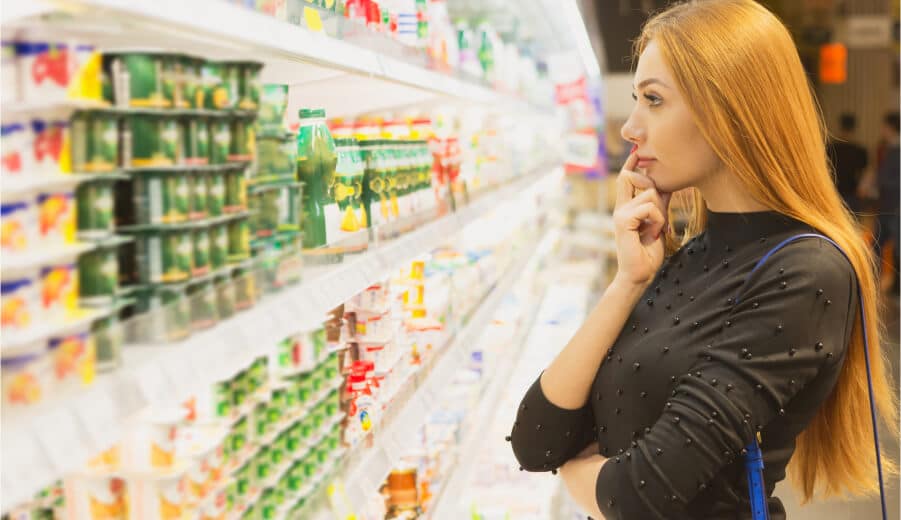
6. Number of revisits
Tracking the number of revisits is a retail metric that counts how many times a shopper revisited a certain spot with their gaze.
Revisits allow researchers to determine which areas repeatedly attracted consumers, but were ultimately moved on from with or without action. This data is used to pinpoint areas that are appealing or confusing and may require further examination.
7. Conversion rate
A conversion rate is the number of individuals that actually made the final purchase of a product compared to those who did not. This provides retailers with information on where a customer spends, what shoppers are purchasing, and their average transaction amounts.
The conversion rate is a prominent KPI due the fact that it allows retail businesses to predict profitability through providing insight into what factors turn shoppers into buyers. Conversion information is crucial in merchandising because the only way to grow sales is to ensure store visitors convert into paying customers.
Conversion data is also commonly expanded upon to find out how long consumers take to covert and which retailers offer higher or lower conversion rates.
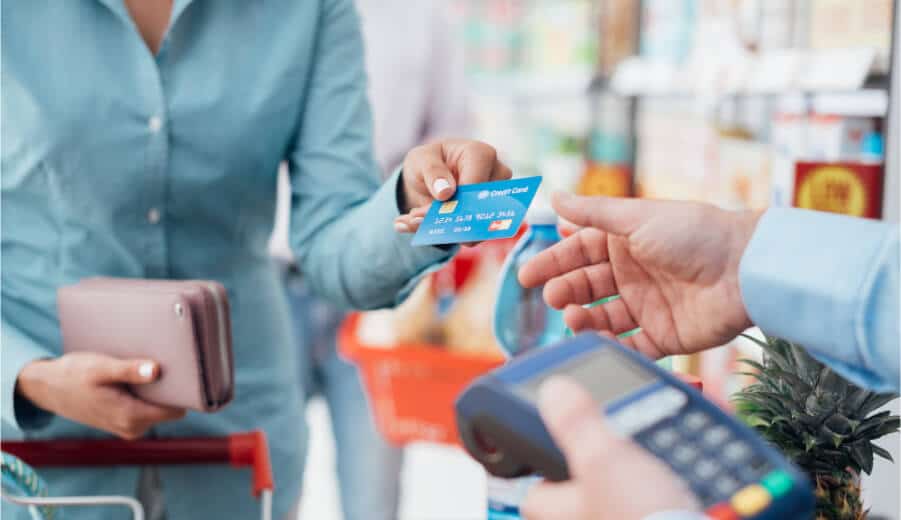
8. Sales per square foot
The category management metrics of shelf length, total visual area, number of product facings, and number of products are used to find retail store sales per square foot.
The sales per square foot KPI identifies how effectively a store is using its retail space. This information can offer great insight into where and what merchandising layouts are performing well or are in need of improvement.
These metrics are often visualized with a simple grocery store heat map that measures aisle layout performance to provide insight on where improvements can be made in order to drive sales.
Subscribe to our newsletter
Get our blogs and the latest retail news delivered to your inbox monthly.
Recent Posts
Pharmacy Merchandising Tech: 5 Powerful Ways to Boost OTC Sales
Here’s a staggering fact: Americans now buy over-the-counter (OTC) products 26 times a year-that’s 8x more often than they visit the doctor. With the OTC market exploding from 42 billion to 70 billion by 2033, the race is on for shelf space in 750,000+ stores. But here’s the problem, 44% of shoppers discover over-the-counter products…
How to Use 3D VR for Smarter Store Layout and Design
Explore how VR is revolutionizing grocery store layout and design planning by offering enhanced blueprint visualization in immersive 3D environments. Grocery store layout strategy is essential for establishing a positive and productive customer experience. A thoughtfully designed layout not only improves convenience but also fosters a sense of discovery, leading to longer, more enjoyable shopping…
Sauce & Condiment Sales Heat Up as New Tech Helps Out
Young Millennials and Gen Z consumers have fueled a boom in hot sauce trends and condiment sales. This surge is pushing leading brands and retailers to elevate their game with smarter virtual product innovation and assortment optimization. The condiment and hot sauce industry is thriving in 2024, driven by evolving consumer tastes and the growing…

